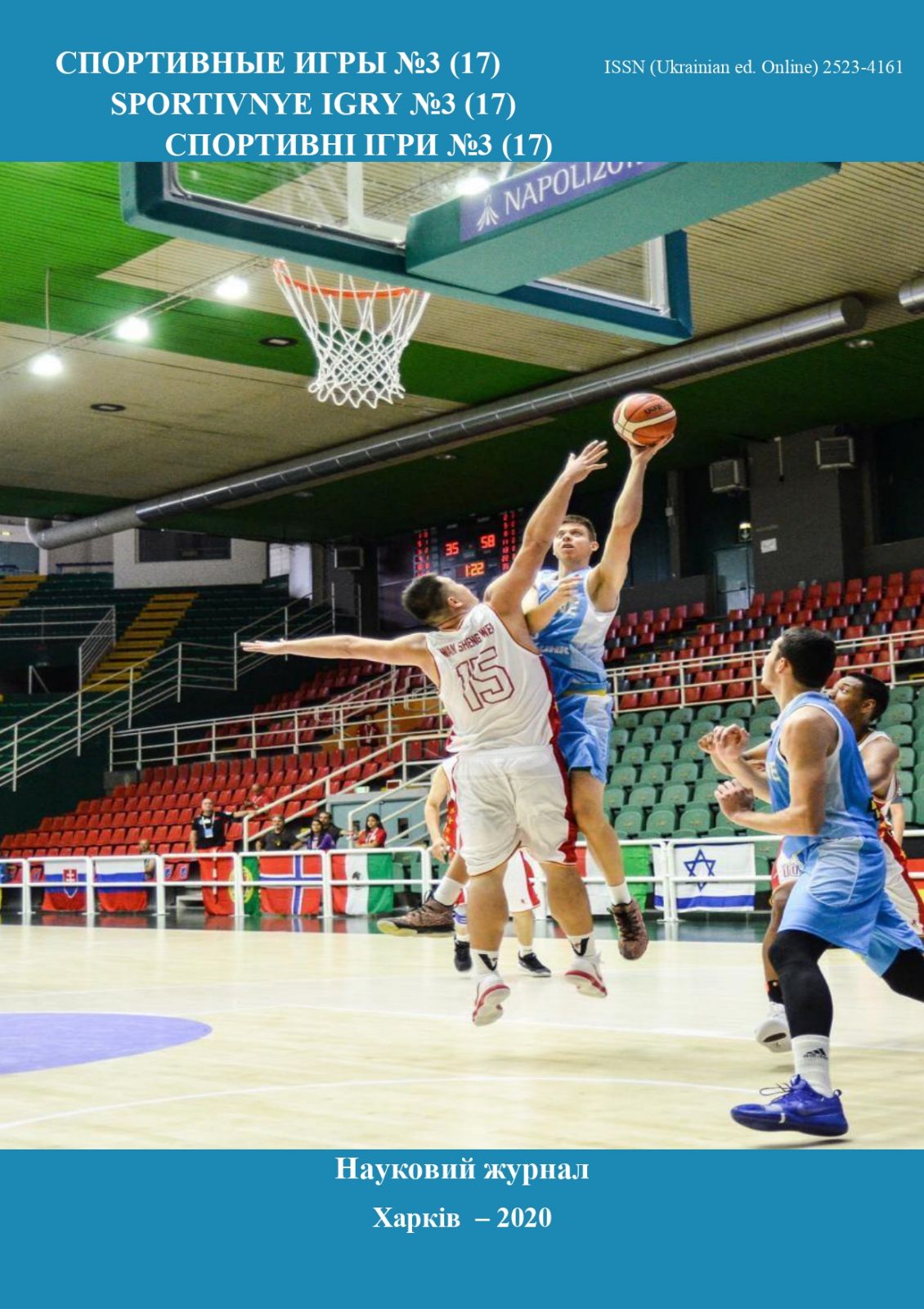Morphological indicators of model characteristics of football players
DOI:
https://doi.org/10.15391/si.2020-3.02Keywords:
morphological indicators, training process, football players, body proportions, game roles, model characteristicsAbstract
Improving the quality of football training, the introduction into practice of
effective means and methods of training, indicate the need for special study and search for
fundamentally new approaches to the organization of the training process. First of all, it is
necessary to focus on stable, little variable in the course of development factors, which correspond
to morphological indicators. The purpose of the research to determine the morphological
indicators of football players of different game roles with their subsequent consideration in the
construction of the training process. Material and methods of the research. To achieve the goal
and solve the tasks, we used the following research methods: analysis and generalization of
literature sources; pedagogical observations and experiment; anthropometric research methods;
statistical processing of results. In the course of the research, 40 football players of different
qualifications and game roles, PSM football groups, who train at TNPU named after V. Hnatiuk. Of
these, 3 goalkeepers (7.5%), 13 defenders (32.5%), midfielders - 17 (42.5%) and 7 strikers, which
is 17.5% of the total number of surveyed players. The training experience of football players is from
1 to 10 years. Results of the research. In the course of the research, the results of anthropometric
surveys of 40 football players of different game roles are presented. Identified morphological
features and differences in body structure of goalkeepers, defenders, midfielders and attackers,
namely, goalkeepers are characterized by the greatest length, body weight, mass-growth index,
longest torso and arms, the largest index of chest and limbs, arm length, legs, shoulders , forearms,
thighs and legs and shoulder width. Whereas, attackers have the largest number of the smallest
values of the studied indicators, at the same time, have a large index of limbs and a long torso.
Summarizing the above, we can say that there are some differences between players of different
roles, because during the game they perform different functions depending on the role, but it should
be noted some common features of body structure such as a narrow pelvis, long legs. Conclusions.
Analysis of scientific and methodological literature showed that one of the important criteria for
training athletes in any sport is anthropometric data and the level of sportsmanship is due to a large number of factors, among which a special place belongs to the body structure of the athlete;
From the football players of different roles we examined, we can say that they have their own
overall body size and characteristic differences depend on the game role; the morphological
features of the physique of football players, which are necessary for each playing role, are quite
clearly differentiated; total body size (weight, height and perimeter of the chest), in combination
with partial links and proportions of the body can be used for the initial formation of game lines.
References
Бриль, М.С. (1980). Отбор в спортивных играх. М. : Физкультура и спорт.
Годик, М.А. (2006). Физическая подготовка футболистов. М. : Терра-спорт, Олимпия пресс.
Голомазов, С. (2003). Морфологические признаки вратарей высокой квалификации. Теория и практика футбола, 2, 25-28.
Грубар, І.Я. (2018). Характеристика показників гемодинаміки футболістів-аматорів до та після фізичного навантаження. Фізична культура, спорт та здоров’я нації, 5, 368-373.doi: 10.31652/2071-5285-2018-5-24-367-372
Грубар, І.Я. (2012). Морфологічні показники модельної характеристики футболістів. ІV Міжнародна науково-практична конференція «Актуальні проблеми розвитку спорту для всіх: досвід, досягнення, тенденції»,147-153.
Грубар, І.Я. (2012). Тотальні та парціальні розміри ланок тіла футболістів різних амплуа.Теорія і практика фізичного виховання, 1, 128-134.
Дулібський, А.В. (2001). Моделювання тактичних дій у процесі підготовки юнацьких команд з футболу. Федерація футболу України.
Лисенчук, Г.А. (1996). Модельные характеристики соревновательной деятельности футболистов высокой квалификации на основе анализа игр финальной части чемпионатов мира 1990 г. в Италии и в 1994 г. в США. Учебное издание для тренеров. М. : Олимпийская литература.
Лисенчук, Г.А. (2003). Управление подготовкой футболистов. М. : Олимпийская литература.
Мартиросов, Э. (2004). Морфологические особенности футболистов высокой квалификации разных амплуа. Теория и практика футбола, (3), 27-32.
Марченко, В.А. (1995). Организация, планирование и управление спортивной тренировкой футболистов высокой квалификации. Харьков.
Платонов, В.Н. (1997). Общая теория подготовки спортсменов в олимпийском спорте. Киев : Олимпийская литература.
Пшибильскі, Войцех (1998). Комплексний контроль у системі багаторічної підготовки футболістів дитячого та юнацького віку. (Кандидатська десертація). Київ, Україна.
Савастянова, Е.Б. (1997). Морфологические особенности футболистов на разных этапах спортивной подготовки. Рига : РГАФК.
Савка, В.Г., Радько, М.М., & Воробйов, О.О. (2007). Спортивна морфологія. Чернівці: Книги – ХХІ.
Шамардин, В.Н. (2002). Моделирование подготовленности квалифицированных футболистов. Днепропетровск : Пороги.
Шамардин, В.Н. (2012). Технология подготовки футбольной команды высшей квалификации.Днепропетровск : Инновация.













